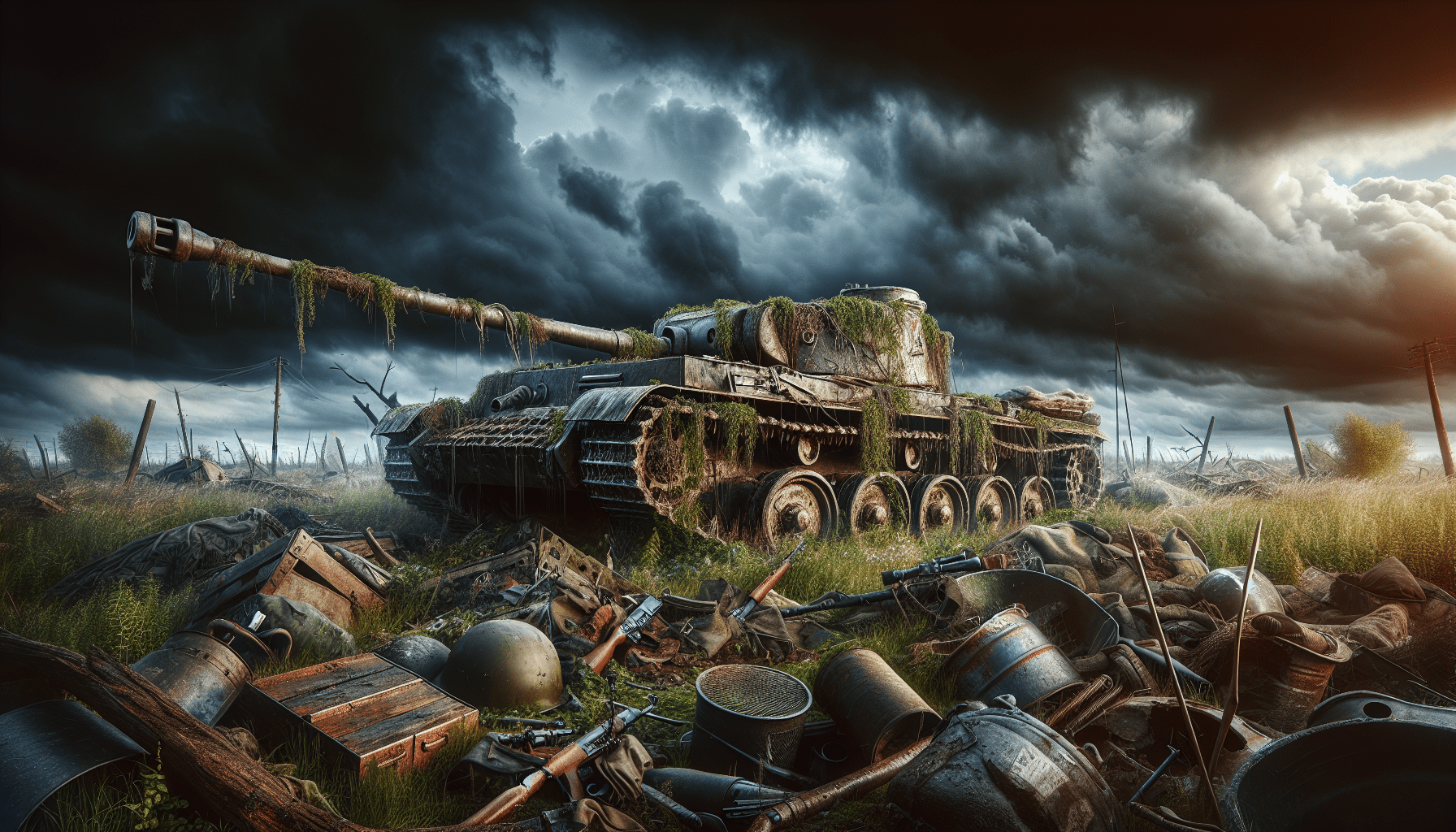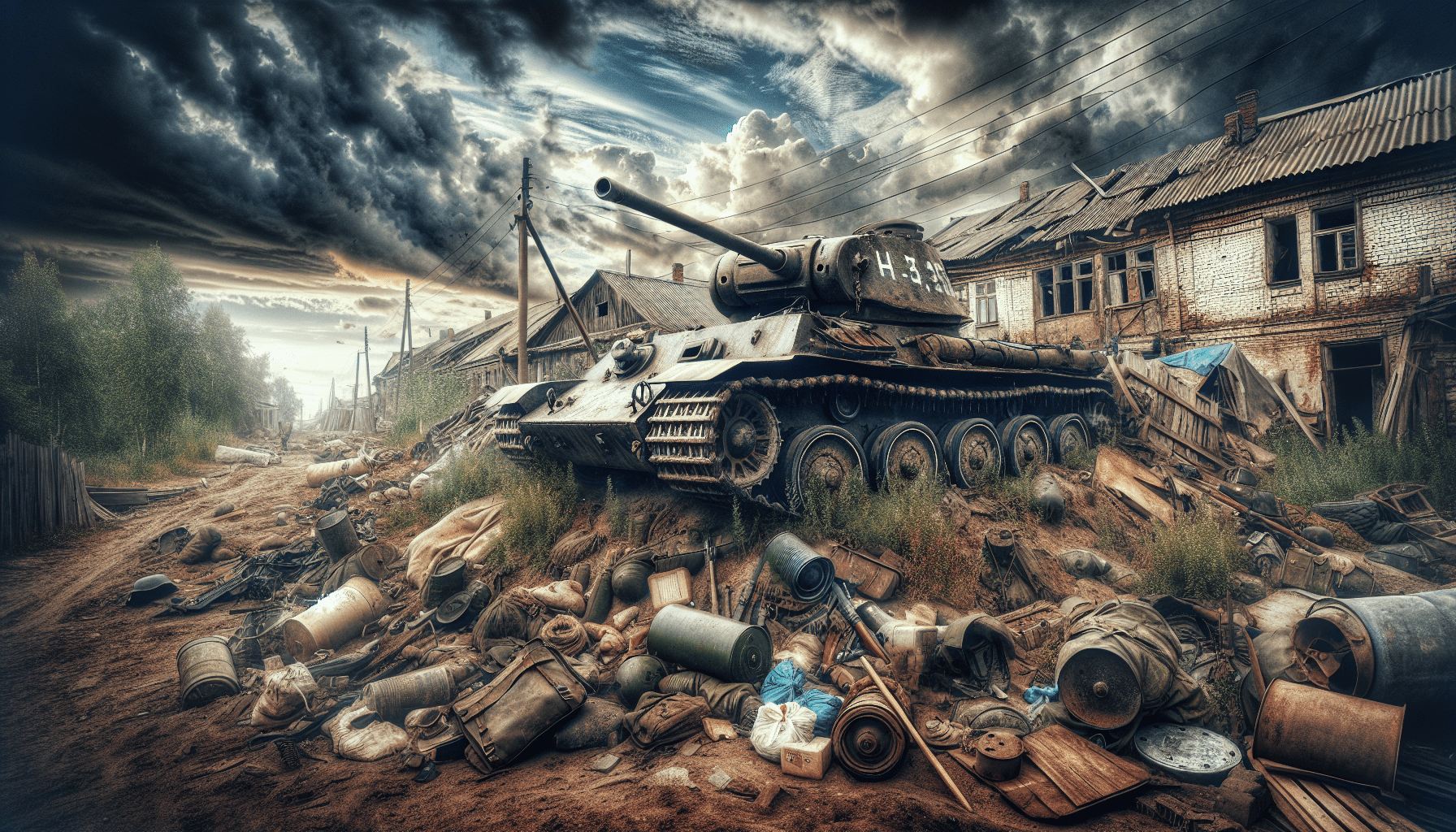The ongoing battle in Kharkiv reflects a critical phase in the current military conflict, marked by recent territorial gains by Russian forces and significant challenges for Ukrainian defenses. Over the past five days, escalating tensions have resulted in Russia’s reported capture of several border villages, notably Luk’yantsi, which poses a direct threat to Kharkiv city. This situation has prompted urgent assessments from Ukrainian officials, who describe the unfolding circumstances as perilous and indicative of potential tactical Russian successes.
This article will explore the implications of these developments, including the strategic importance of captured towns and the evolving dynamics of military leadership on both sides. Additionally, it will analyze the logistical difficulties faced by Ukrainian forces in fortifying their defenses against sustained artillery shelling, and the possible long-term objectives of Russian operations in the region. As the conflict progresses, the necessity for adaptive strategies and ongoing international support becomes increasingly pronounced.

Overview of the Kharkiv Battle
The Battle of Kharkiv is a significant military confrontation that has unfolded over the past days, characterized by intensifying hostilities and strategic movements critical to the balance of power in the region. This conflict has garnered attention due to its implications for both local and broader regional dynamics.
Timeline of the Battle Duration
The hostilities commenced in earnest five days ago, signaling a crucial escalation in the ongoing conflict. The sustained operational tempo has tested the endurance and resolve of both Ukrainian and Russian forces, as they engage in rapid exchanges of fire and tactical maneuvers. Each day of the battle has brought with it an evolving narrative, complicating both military and civilian life in the area.
Immediate Territorial Gains by Russia
In the initial days of the battle, Russian forces have reportedly secured control over a number of border villages, with estimates indicating that between nine to twelve villages are now under their dominion. This territorial expansion poses an immediate threat to Kharkiv city, situated perilously close to these newly captured locations, raising concerns about the safety and security of Ukrainian defensive capabilities in the region.
Impact on Local Population
The ramifications of the ongoing battle extend beyond military fronts, deeply affecting the local population. As artillery exchanges and ground offensives escalate, civilians are caught in the crossfire, facing risks to their safety, and future stability. The precarious situation necessitates urgent humanitarian considerations, as people grapple with the profound psychological and physical impacts of war.
Russian Territorial Claims
Captured Border Villages
The capture of border villages by Russian forces is not merely a matter of tactical maneuvering; it represents a strategic delineation that affects the broader geopolitical landscape. These territorial claims enhance Russia’s position in the region and serve as a direct challenge to Ukrainian sovereignty.
Implications of Luk’yantsi Capture
The village of Luk’yantsi, now under Russian control, is especially significant due to its proximity to Kharkiv. The occupation of this village poses a direct threat, as it could enable Russian forces to exert artillery fire on Kharkiv itself. The potential for such attacks heightens the stakes for Ukrainian defenders, compelling them to reassess their strategic options.
Strategic Location of Lyptsi
The village of Lyptsi stands as another pivotal locus in the current conflict, with its capture likely to extend Russian artillery range and further challenge the defenses of Kharkiv. Thus, the nature of territorial claims and the control over these villages are not merely tactical victories for Russia but rather integral components of their broader military objectives.
Concern for Ukrainian Defense
Artillery Threats from Captured Towns
As Russian forces tighten their grip on the border sections, Ukrainian defense assessments reveal a deeply concerning reality: critical artillery threats emanate from newly captured towns. The looming danger of sustained bombardments from these positions presents an urgent challenge to Ukrainian military strategists.
Ukrainian Officials’ Assessment
In light of these developments, Ukrainian officials have characterized the situation as “critical,” acknowledging tactical setbacks in the face of Russian advances. The recognition of these shortcomings is essential for understanding the reshaping of military strategies and resource allocations moving forward.
Crisis Management in Defense Strategies
In response to the galeforce of the Russian offensive, the Ukrainian military is compelled to enact comprehensive crisis management strategies. This not only includes reassessing defense postures but also ensuring the timely allocation of resources and reinforcements in targeted districts. The rapid evolution of battlefield conditions requires agility and foresight from Ukrainian leadership.
Uncertain Russian Goals
Analysis of Long-term Objectives
Understanding the underlying motivations of the Russian assault remains complex and often speculative. Analysts grapple with the question of whether these actions are an isolated maneuver or part of a larger strategy aimed at establishing a buffer zone around Kharkiv.
Possibility of a Buffer Zone
The possibility of Russia intending to create a buffer zone adds layers of complexity to the conflict. Such a move could fundamentally alter regional security dynamics, potentially leading to extended engagements and further military incursions if not effectively countered.
Strategic Aims Beyond Kharkiv
Emerging evidence suggests that Russia’s ambitions may extend beyond Kharkiv itself, implicating broader interests in regions like Sumy and further westward. Understanding these strategic aims is paramount for formulating a comprehensive response from the Ukrainian military and its allies.

Ukrainian Military Insights
Acknowledgment of Russian Tactical Successes
The Ukrainian General Staff has candidly acknowledged Russian tactical successes, a critical admission that reflects the stark realities on the battlefield. This recognition underlines the need for immediate realignment of Ukrainian strategic responses to mitigate further territorial losses.
Defensive Operation Challenges
Ukrainian forces face significant hurdles in executing defensive operations amidst the ongoing assault. Reports indicate challenges in maintaining troop cohesion and fortifying positions under heavy artillery barrages, which jeopardizes operational effectiveness.
Adapting to Tactical Changes
Adapting to the changing tactical landscape is essential for the Ukrainian military as it faces a renewed Russian offensive. This requires not only strategic ingenuity but also swift implementation of adaptive tactics that can potentially level the playing field in ongoing engagements.
Viral Video Evidence
Significance of Close Troop Marching
Recent viral videos showing closely marching Russian troops have sparked discussions regarding battlefield tactics and the implementation of defensive lines. Such footage often betrays critical aspects of military operations, raising questions of preparedness and effectiveness among combatants.
Implications of Defensive Line Weakness
The footage suggests potential weaknesses in Ukrainian defensive lines, indicating a lapse in standard military protocols concerning troop spacing. The implications of such vulnerabilities are profound, as they highlight the necessity for a reevaluation of defensive strategies amidst increasing pressure.
Public Perception and Morale Considerations
The dissemination of these videos also affects public perception and morale among both Ukrainian forces and civilians. The psychological impact of witnessing close-range troop movements can lead to fluctuations in morale, necessitating concerted efforts to bolster resolve and maintain unity among troops and the civilian population.

Leadership Changes in Ukraine
Appointment of General Mykhaylo Drapatiy
The recent appointment of General Mykhaylo Drapatiy marks a significant shift in Ukrainian military leadership during the ongoing battle for Kharkiv. His prior experience in successful operations provides a potential avenue for evolving military strategy amidst dire circumstances.
Analysis of Strategic Shifts
Drapatiy’s appointment may indicate a pivot in strategic approaches employed by the Ukrainian military, underscoring the need for responsive and resilient leadership in the face of enemy advances. The effectiveness of this new leadership in galvanizing forces and restructuring operations remains to be seen.
Consequences of Leadership Changes
Leadership transitions can often have broader implications for military effectiveness and cohesion. The replacement of high-ranking commanders at this critical juncture underscores both the seriousness of the situation and the necessity for innovative strategic solutions.
Challenges in Defense Construction
Impact of Artillery Shelling
Ongoing Russian artillery shelling has complicated the construction of defensive fortifications, creating an atmosphere fraught with tension and urgency. These conditions hinder the ability of Ukrainian forces to establish robust defensive structures essential for safeguarding positions.
Logistical Issues in Fortification
Logistical challenges arising from the aggressive Russian offensive further exacerbate the difficulties in fortifying defenses. The challenges of transporting materials and personnel under continuous fire create significant obstacles that must be navigated carefully.
Assessment of Current Defense Structures
Assessments of existing defense structures are critical to understanding their capabilities to withstand sustained assault. Continuous evaluation of these fortifications must be undertaken to inform any necessary upgrades or reconfigurations required to withstand enemy advances.
Disclaimer on Information Sources
Biases in Reporting
The complexities of the information landscape surrounding the Kharkiv conflict necessitate a careful consideration of the potential biases present in various reports. Understanding differing perspectives is vital for fully contextualizing the unfolding narrative.
Contrasting Perspectives from Ukrainian and Russian Media
Reports from both Ukrainian and Russian media outlets exhibit distinct biases shaped by their respective narratives and national interests. Acknowledging these biases is fundamental for an informed understanding of the conflict and its ramifications.
Importance of Critical Analysis
Engaging in critical analysis of the information available is essential for developing a nuanced understanding of the ongoing conflict in Kharkiv. Emphasizing the need for rigorous examination of sources will enable you to form a more comprehensive perspective as the situation unfolds.
Conclusion
Summary of Key Findings
In summation, the ongoing battle for Kharkiv highlights the complexities of modern warfare and the fluctuations in territorial control. The implications of these developments on the military and civilian population are significant, with far-reaching consequences for both short- and long-term strategies.
Importance of Ongoing Monitoring
As the situation continues to evolve, the importance of ongoing monitoring cannot be overstated. Staying informed about developments, key strategic shifts, and international responses will be critical for all stakeholders involved.
Future Implications for Kharkiv and Surrounding Areas
The future of Kharkiv and its surrounding areas remains uncertain, pending further developments in military engagement and international diplomacy. The stakes are high, and continued vigilance is essential as each side navigates the unpredictable terrain of conflict. Understanding the interconnected dynamics at play will be crucial for anticipating future outcomes in this ongoing battle.
